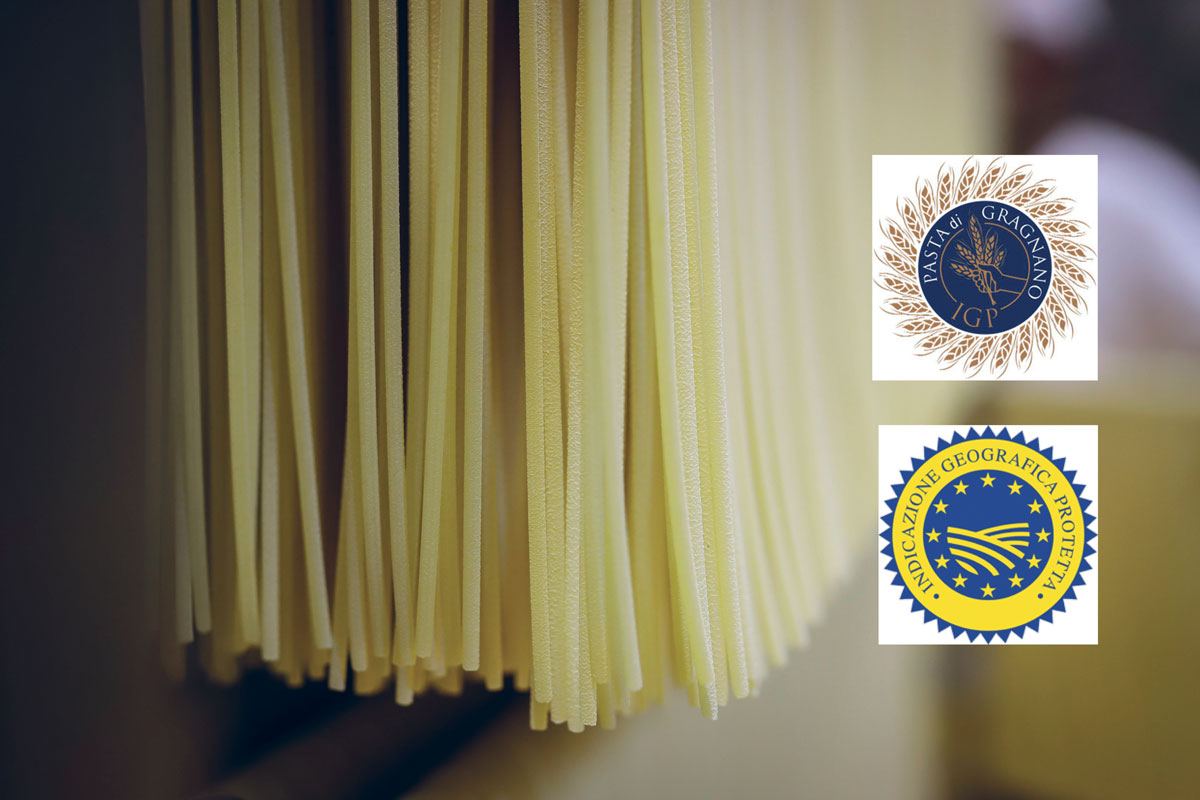
Last year the production of Pasta di Gragnano PGI grew by 30%, also driven by the new living conditions dictated by the Covid-19 pandemic. In the meantime, even the smallest companies in the Campanian district have implemented the necessary equipment to relaunch e-commerce sales.
“We hadn’t started e-commerce yet – says Susanna Moccia, director of Human Resources at La Fabbrica della Pasta company – but since Easter 2020 we’ve seen growing interest on the web in high-quality products.” The landing on the web took place under the guidance of the protection Consortium which promotes the product on digital channels. An example of this is “Viaggio in Italia, tra cultura ed enogastronomia” (Journey through Italy, between culture and enogastronomy), created together with the Consortium for the protection of Mozzarella di Bufala Campana PDO.
Discover the authentic Pasta di Gragnano PGI on Italianfood.net
PASTA DI GRAGNANO PGI BY THE NUMBERS
Today in Gragnano, a village of 15 square kilometers between the Lattari mountains and the Gulf of Naples, 23 pasta factories with more than 300 employees are active – employing 5% of the entire workforce of the pasta sector in Italy. Thirteen of these companies have joined the Consortium and represent 97% of total production and turnover. The overall production value in 2020 reached 3oo million euros.
Today, Pasta di Gragnano PGI is the ninth most valuable product among Italian PDO and PGI products and the second in Southern Italy. The export share accounted for 40% of production (10% of total Italian pasta exports) mainly towards Europe and the United States.

For Garofalo, one of the largest companies, exports grew by 35% in 2020. In particular, Spain is sharply turning towards the high-quality pasta segment. A market all the more important for Garofalo, that since 2014 is controlled with a share of 52% by Spain’s Ebro Foods group.
THE CONSORTIUM’S MEMBER COMPANIES
- Garofalo
- Pastificio Liguori
- Premiato Pastificio Antonio Massa
- D’Aragona
- D’Aniello
- Il Re della Pasta
- Premiato Pastificio Afeltra
- Il Mulino di Gragnano
- La Fabbrica della Pasta di Gragnano
- Antiche Tradizioni di Gragnano
- Pastificio Di Martino
- Pastificio Dei Campi
- Pastai Gragnanesi
- L’Oro di Gragnano
A CENTURIES-OLD TRADITION
In short, Gragnano aims at going back to its origins. When, in the mid-1800s, 75% of the population was involved in the production of macaroni within more than one hundred pasta factories. Or when in 1845 King Ferdinand II of Bourbon granted the citizens of the village the high privilege of supplying the Court with “long pasta” shapes. Since the sixteenth century the production of pasta had already started and the habit of drying it on the street had spread thanks to the microclimate generated by Lattari Mountains, Vernotico river and winds. As a matter of fact, in the nineteenth century the urban plan was thought in function of the need to dry pasta in the street, with low buildings and dedicated spaces.
